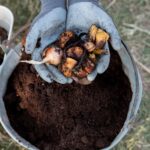Citrus greening disease, also known as Huanglongbing (HLB), is one of the most devastating diseases affecting citrus trees worldwide. It is caused by the bacterium Candidatus Liberibacter and spread by the Asian citrus psyllid (Diaphorina citri). In Limpopo, where citrus farming is a major agricultural activity, preventing this disease is crucial to protect yields and ensure the sustainability of the industry.
1. Plant Disease-Free Citrus Trees
Starting with healthy, disease-free planting material is essential. Farmers should purchase certified citrus seedlings from reputable nurseries to avoid introducing infected plants into their orchards.
2. Monitor and Control Psyllid Populations
Since citrus greening is spread by the Asian citrus psyllid, controlling this insect is key to preventing infection. Regular field scouting should be done to detect psyllid presence early. Farmers can use:
- Insecticides such as neonicotinoids and pyrethroids to reduce psyllid populations.
- Natural enemies like ladybugs and parasitoid wasps to biologically control psyllids.
3. Remove and Destroy Infected Trees
Once a tree is infected, there is no cure. Prompt removal of symptomatic trees prevents the spread of the disease to healthy citrus plants. Proper disposal, such as burning or burying, ensures the bacteria do not persist in the environment.
4. Maintain Orchard Sanitation
Keeping citrus orchards clean and well-maintained helps reduce disease risk. This includes:
- Pruning infected branches to slow disease progression.
- Removing weeds and alternative host plants that may harbor psyllids.
- Disinfecting pruning tools to prevent bacterial spread.
5. Use Nutrient Management to Strengthen Trees
Healthy trees are more resistant to diseases. Providing balanced nutrients, including essential micronutrients like zinc and manganese, can help trees withstand infection and reduce disease severity.
6. Implement Biological and Organic Control Methods
Some farmers use antimicrobial treatments, such as heat therapy and organic sprays, to suppress bacterial growth in infected trees. Additionally, certain plant extracts and beneficial microbes have shown promise in limiting disease progression.
7. Adopt Regional Disease Management Strategies
Citrus growers in Limpopo should work together through grower associations and government extension programs to implement coordinated disease control measures. Sharing information and applying region-wide psyllid control programs can significantly slow the spread of citrus greening.
Preventing citrus greening disease requires a combination of careful monitoring, insect control, sanitation, and the use of disease-free plants. By adopting these practices, citrus farmers in Limpopo can protect their orchards and sustain citrus production for the long term.
Join 'Farmers Mag' WhatsApp Channel
Get the latest Farming news and tips delivered straight to your WhatsApp
CLICK HERE TO JOIN






